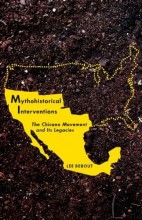This is part of a longer blog series, which you can find links to the previous as well as the next blog posts at the bottom of this blog.
From my work in my capstone project, I wanted to take a moment and reflect on the bigger picture and discuss why the birth of the Chicana/o Studies Department at Loyola Marymount Univesity is so important.
Consider being in history class and taking some time to learn about the Chicano movement so all you get is a couple of passages on the United Farm Workers Movement. Now this was part of the Chicano history but not the whole story. In other words, sometimes we not only want to learn HIStory but also our story. As stated in Mythohistorical Interventions where we not only hear the demand “that our side of the story be told,” as Lydia R. Aguirre, an activist of the time, retells but also asserts the need for more equal education and curricular equality.
Back in 1968, when high school students were walking out, this was one of the demands they had, curriculum reform. Departments like the one found at LMU or similar programs and departments across the nation can trace their roots back to students who wanted a say in their education. They wanted an equal education, which encompasses the telling of their side of the story but also an opportunity to tell the story. Thus driving many Chicano student activists to fight for the creation of Chicano studies programs and cultural centers in universities and colleges. Within this environment, now the Chicanos had an avenue to prosper in thus a dramatic increase in academic recognition in Chicano-produced work as seen over the years that followed. The creation of departments like LMU’s Chicana/o Studies department developed a professional organization in which a better dialogue across educational communities was born.
In a country that finds many great leaders in those who want change, it is sad to not recognize these sudents’ merits who worked towards the educational equality and curriculum reform . Their hard work and devotion to the programs that now exist across the nation starts to get devalued as the program they help set up get questioned and in some cases even banned. I hope I can now at least shine a light on why they are so important and need to be preserved.
Read more:
The Birth of the Chicana/o Studies Department, Setting the Stage, Students Propose a New Program, From Chicano Studies Department to Mexican- American Studies Degree Program, Capstone Project Gone Blog, So Let’s Put Some of the Pieces Together
